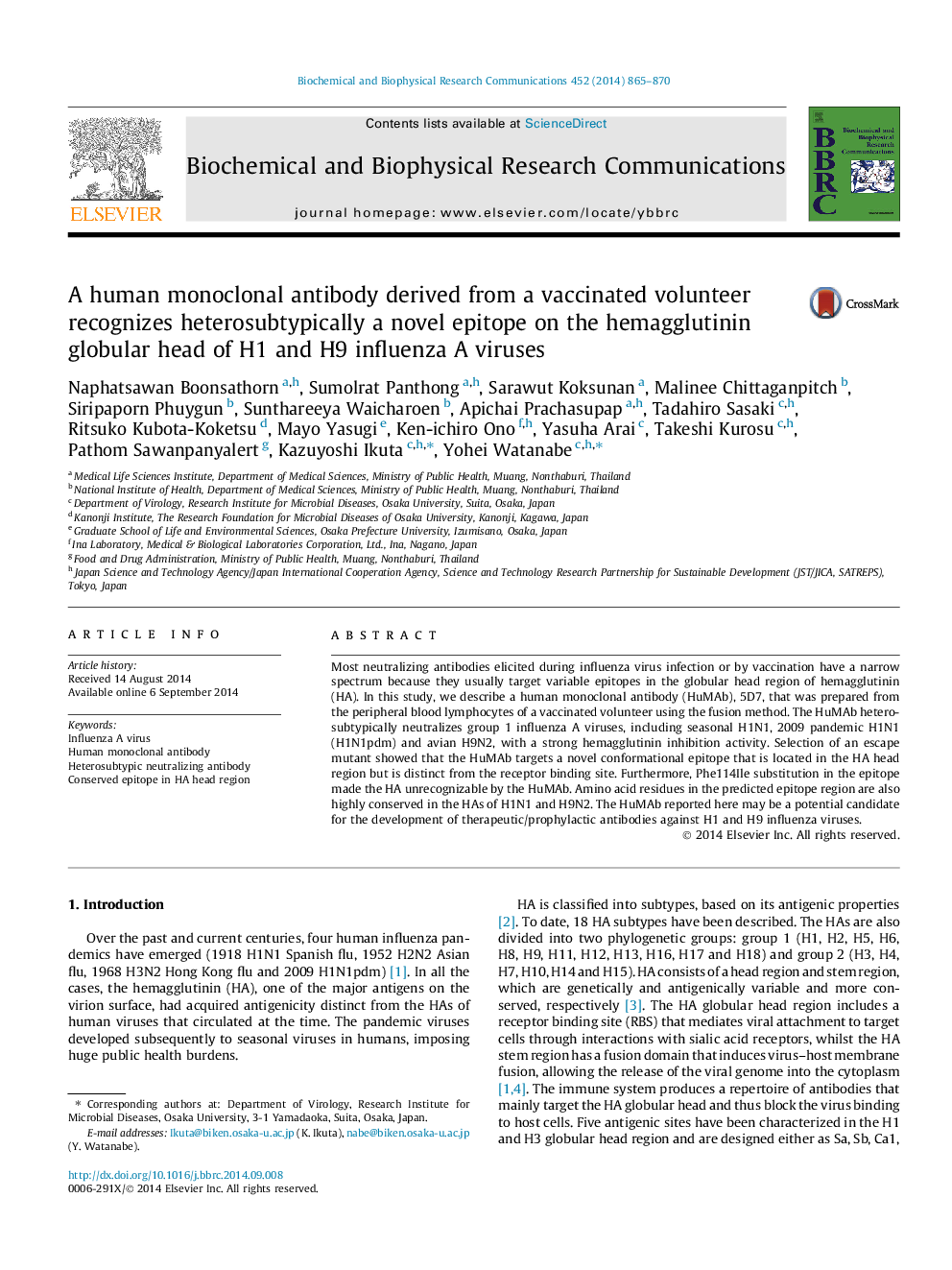| Article ID | Journal | Published Year | Pages | File Type |
|---|---|---|---|---|
| 10753964 | Biochemical and Biophysical Research Communications | 2014 | 6 Pages |
Abstract
Most neutralizing antibodies elicited during influenza virus infection or by vaccination have a narrow spectrum because they usually target variable epitopes in the globular head region of hemagglutinin (HA). In this study, we describe a human monoclonal antibody (HuMAb), 5D7, that was prepared from the peripheral blood lymphocytes of a vaccinated volunteer using the fusion method. The HuMAb heterosubtypically neutralizes group 1 influenza A viruses, including seasonal H1N1, 2009 pandemic H1N1 (H1N1pdm) and avian H9N2, with a strong hemagglutinin inhibition activity. Selection of an escape mutant showed that the HuMAb targets a novel conformational epitope that is located in the HA head region but is distinct from the receptor binding site. Furthermore, Phe114Ile substitution in the epitope made the HA unrecognizable by the HuMAb. Amino acid residues in the predicted epitope region are also highly conserved in the HAs of H1N1 and H9N2. The HuMAb reported here may be a potential candidate for the development of therapeutic/prophylactic antibodies against H1 and H9 influenza viruses.
Related Topics
Life Sciences
Biochemistry, Genetics and Molecular Biology
Biochemistry
Authors
Naphatsawan Boonsathorn, Sumolrat Panthong, Sarawut Koksunan, Malinee Chittaganpitch, Siripaporn Phuygun, Sunthareeya Waicharoen, Apichai Prachasupap, Tadahiro Sasaki, Ritsuko Kubota-Koketsu, Mayo Yasugi, Ken-ichiro Ono, Yasuha Arai, Takeshi Kurosu,
